Former Students
Are you wondering where a degree in Archaeology can take you in your career?
Well, our students have gone on to pursue a variety of careers, taking with them the knowledge and skills gained during their time in the Department of Archaeology.
Here, some of our former students outline how their archaeology degree at MUN influenced their career paths.
Jeri Bohms
After receiving a BA in 2004 from Calvin College and MA in Anthropology and Museum Studies from the University of Wisconsin-Milwaukee in 2006, Jeri earned an MA in Archaeology from MUN in 2015. Under the supervision of Dr. Lisa Rankin, she excavated an Inuit winter sod house at the Double Mer Point site, near Rigolet, Labrador, and wrote a thesis entitled Illuminating Inuit Life at Double Mer Point: The Excavation of an 18th-century Communal Winter House. While at MUN, Jeri worked in the field at Double Mer Point for two seasons and spent many hours in the lab cataloging artifacts from the site. The mix of Inuit and European artifacts, reflective of the fur trade era in coastal Labrador, paint a fascinating picture of people adapting to a world quickly changing around them while maintaining their own cultural identity.
After completing her degree, Jeri spent over two seasons working in Cultural Resource Management in southern Ontario, putting all that fieldwork experience to use. Now she has a position with Parks Canada at Fort St. Joseph National Historic Site, on an island southeast of Sault Ste. Marie, Ontario, as a Heritage Presenter. Fort St. Joseph was once the westernmost British military outpost on the Great Lakes, built beginning in 1796 where the St. Mary's River opens up into northern Lake Huron. The Fort was largely a fur trade site, hosting traders from the Northwest Company among others, and an official warehouse of the British Indian Department. In addition, a small garrison of soldiers was stationed there on the border with the United States, which was key to the War of 1812 and protecting British interests in the Upper Great Lakes. The Fort today is a large archaeological site, with building foundations and ruins for visitors to explore and experience. Jeri uses her fur trade archaeology and museums background to develop and deliver programs for visitors to the site. From tours highlighting the archaeological discoveries to demonstrations of heritage skills, Jeri and the Parks Canada team tell the stories of the traders, soldiers, First Nations, Métis, and civilians who were integral to life at Fort St. Joseph.
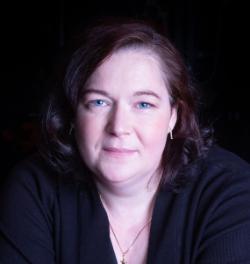
Jennifer Campbell
Dr. Jennifer L. Campbell completed her B.A. and Master’s degrees at Memorial University. Her master’s research “The Huron of the Kawartha Lakes: faunal exploitation strategies as indicators of change during the Pre, Proto and Historic Periods” (2004) was supervised by Dr. Lisa Rankin. Jennifer earned her Ph.D. (2011) from the University of Toronto for her doctoral research entitled “Architecture and Identity: The Occupation, Use and Reuse of Mughal Caravanserais”.
Jennifer’s work has taken her across Canada, the United States and South Asia. Today she is the Manager of Cultural Heritage for the City of Kingston and manages Kingston’s two City owned museums, as well as Kingston City Hall National Historic Site. Working with colleagues and community partners Jennifer leads the City’s Engage for Change: Reconciliation Journey Project as well as its Your Stories, Our Histories - Cultural Heritage Strategy. The broad range of experiences that Jennifer brings to her work take their roots in her time at Memorial. Her experiences in project planning, cultural resource management, community archaeology and museums studies anchor the work she does today. Memorial is also were she cut her teeth on social theory and on understanding the impacts heritage and cultural empowerment have on community development and identity.
Prior to joining the Cultural Services Department Jennifer was an Assistant Professor in the Department of Anthropology at the State University of New York. Jennifer and remains a research fellow at the University of Toronto and Trent University.
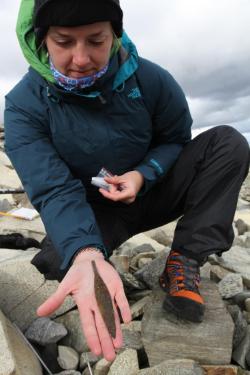
Tessa de Roo
Dr. Tessa de Roo completed her B.A. Honours degree in historical archaeology in 2009, under the supervision of Dr. Barry Gaulton, with a thesis entitled All the King's Ponies: The Story of Ferryland's Horses as Told by their Furnishings. During her time as an undergraduate at Memorial she held a Memorial Undergraduate Career Experience Program (MUCEP) job in the finds laboratory of the Department, and had the opportunity to spend a summer excavation season working at the Dorset Paleoeskimo site of Phillip's Garden in Port au Choix. She earned her Master’s Degree and Ph.D from Cambridge University, UK.
Tessa continues to draw on the wide range of material and skills learned as an undergraduate at Memorial in her current job as an editor with British Archaeological Reports (Oxford, UK).
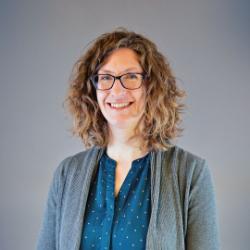
Amelia Fay
Dr. Amelia Fay completed her Master’s and Doctoral degrees at Memorial. She moved from Winnipeg, Manitoba to work under the supervision of Dr. Peter Whitridge, completing her MA in 2008, and fell in love with the province and working in Nunatsiavut. She continued her studies under the supervision of , focussing on Inuit-European contact along the Labrador coast. While working on her PhD, Amelia taught a number of undergraduate courses which gave her valuable teaching experience. In addition to the incredible fieldwork opportunities, which enabled her to visit beautiful communities in the province, the program at Memorial offered well-rounded training that helped her achieve her career goals.
In the fall of 2013, as she entered her 5th year of the PhD program, Amelia moved back home to take on the role as Curator of the Hudson’s Bay Company Museum Collection. Learning a new job while writing her dissertation was a challenge, but with the support from the Department and her employer she completed her doctorate in 2016.
As Curator at a provincial museum, Amelia is responsible for: selecting new acquisitions as offers of donation present themselves; developing exhibitions of various sizes; research and fieldwork on the fur trade; providing tours and public talks; giving content assistance to our Learning and Engagement team; acting as a media spokesperson for fur trade history; and responding to general public inquiries. Her training at Memorial perfectly equipped her for this role by providing opportunities to work with communities, study museum collections and meet museum professionals, and through teaching and conference opportunities that helped hone her public communication skills.
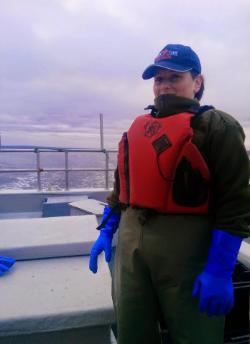
Robyn Fleming
Robyn Fleming received her B.A Honours and Master’s degrees from Memorial. She earned her M.A in 2010 with a thesis entitled Robert's Cove 1 (DjAv-05): A Transitional Recent Indian Site on the Northeast Coast of Newfoundland, under the supervision of Dr. Lisa Rankin. With an interest in prehistoric archaeology and looking towards a professional career in archaeology, Robyn found a number of courses offered by the Department that concentrate on practical field survey and excavation skills, documentary and archival research, and cultural resource management issues, to be particularly useful.
Robyn currently works as an Archaeological Field Director and Job Supervisor for the Department of Archaeology at Memorial, and combines this with her work as a Fisherperson with her family’s crab fishing business.
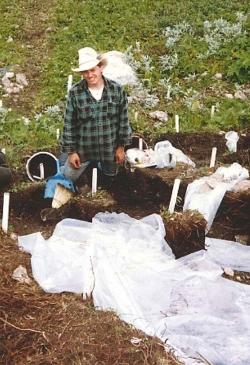
Todd N. Garlie
Dr. Todd N. Garlie completed his B.A Honours degree in 1993 with a thesis entitled An Ethnohistorical and Archaeological Review Regarding Aboriginal Mortuary Remains Reported from Nova Scotia and New Brunswick and the Potential for Future Research, under the supervision of Dr. Michael Deal. During his time with the Archaeology Department Todd took the opportunity to participate in several excavations at Port aux Choix and at Ferryland, both in Newfoundland. Todd credits the variety and depth of coursework and hands-on experiences he obtained at Memorial with providing him with the skills that laid the foundation for his subsequent Masters and Ph.D degrees in Anthropology from McMaster University.
Todd is currently a Biological Research Anthropologist with the Department of Defense, United States Army, Natick Soldier Research, Development and Engineering Center (NSRDEC), Natick, MA.
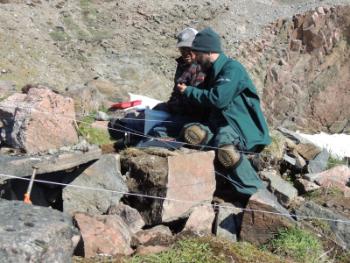
John Higdon
Born and raised in New Harbour, NL., John received his B.A.(Honours) in Anthropology (Archaeology) and Medieval Studies with a diploma in Heritage Resource Management from Memorial University in 2005. In 2008, under the supervision of Dr. Peter Whitridge, he completed an MA in Archaeology focusing on Inuit ground stone tool technology in Northern Labrador. During his time at Memorial, he participated in the Fleur-de-Lys archaeology field school with Dr. John Erwin; was fortunate to spend three summer's excavating Inuit semi-subterranean houses in Nachvak Fiord with Dr. Whitridge and crew; held numerous MUCEP positions helping to catalogue and conserve artifacts in the lab; was vice president of the MUNArch Society for several years; and made a lot of enduring friendships along the way.
Undergraduate and graduate studies at Memorial provided a sound footing for subsequent Arctic archaeology work at Canadian Museum of History and cultural resource management related archaeology contract work throughout Nunavut, Ontario and Newfoundland and Labrador. His career in archaeology has involved getting outside his comfort zone; always being up for an adventure; travelling, working and camping in remote areas of northern Labrador and Baffin Island in areas abound with seals, whales, polar bears, caribou, arctic char, icebergs and the northern lights; sleeping in tents surrounded bear fences for weeks and months at a time; conducting helicopter, boat and terrestrial surveys; surveying, excavating and protecting prehistoric and historic archaeological sites; learning how to use survey equipment and drones; working closely with indigenous and community members to learn about their cultures and how sites, features and artifacts may have been used; and sharing his love of these places, experiences and archaeology with others.
John is currently an archaeologist with Parks Canada, providing archaeological support to national parks and national historic sites throughout Newfoundland and Labrador and Nunavut.

Margaret James
Margaret James earned her B.A. Honours degree in 2010 with a thesis entitled Death and Christianity in the New World: An Examination of Christian burials in 17th-Century Atlantic Settlements, under the supervision of Dr. Barry Gaulton. Margaret went on to complete her Master’s Degree in European Historical Archaeology in 2011 from the University of Sheffield, UK. With a particular interest in material culture studies, Margaret’s work at the early English colony of Ferryland, NL, introduced her to the role of archaeology in public heritage conservation projects, and the importance of interpretation and museum displays.
Today, as an Educator with the Milwaukee Public Museum, Wisconsin, US, Margaret employs the strong foundations of archaeological method and theory gained from her time at Memorial to teach visiting school groups and the general public about the importance of artifacts and the fascinating stories they can tell.
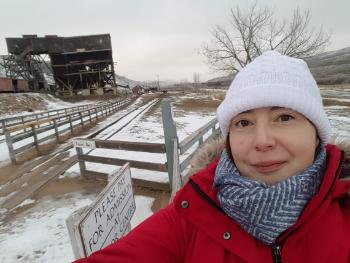
Sarah Newstead
Dr. Sarah Newstead completed her B.A. at Simon Fraser University (2005) and her M.A. at Memorial University (2008). Her master’s research, supervised by the late Dr. Peter Pope, explored early modern Portuguese pottery in Newfoundland. During her time at Memorial, she also worked on Dr. Pope’s Petit Nord project, managing his excavation field lab at Conche in 2006 and 2007. Her time at Memorial sparked a long-term interest in Atlantic trade and, after spending two years working as a historical archaeologist in the commercial sector in Ontario, she moved to the UK to start a PhD with Professor Audrey Horning and Professor Sarah Tarlow at the University of Leicester.
Sarah’s PhD research explored a huge assemblage of 16th- and 17th- century Portuguese ceramics uncovered in Plymouth, England. The ceramics revealed potential evidence of a previously unknown Jewish community in the port city; people who were part of the Jewish diaspora fleeing Inquisition activity in Portugal. Her research involved collaboration with archaeologists at the Nova Universidade de Lisboa and work still continues on identifying Portuguese ceramics on sites around the world. Sarah and her colleage, Dr. Tânia Casimiro, have recently begun publishing on a special type of Portuguese ceramic renowned for its smell and taste.
After completing her PhD, Sarah continued on in the School of Archaeology & Ancient History at Leicester as a Teaching Fellow and Director of the MA in Historical Archaeology. During her time teaching at Leicester, Sarah became interested in industrial and contemporary archaeology, particularly through supervising several dissertations on industrial and contemporary topics. This interest lead to Sarah moving back to Canada in 2017 to become Executive Director of the Atlas Coal Mine National Historic Site in East Coulee, Alberta. The Atlas is one of Canada’s best preserved 20th-century coal mines and one of the nation’s most visited historic industrial sites. The position has proved an excellent opportunity to blend archaeological skills with a myriad of other skills learned in a high-quality graduate program, such as writing, public speaking, project management, and grant writing. Her time at Memorial and the opportunities it gave her early in her career to write grants, manage projects and participate in seminars/conferences, put her on an excellent path towards museums work. As a museum executive, she often looks for archaeology students and graduates to fill roles. The Atlas management team loves the diverse experiences and skills archaeologists bring to the site.
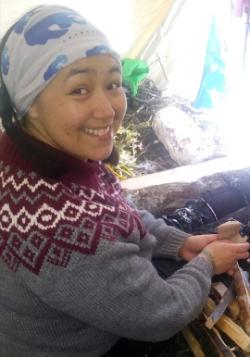
Lena Onalik
Lena Onalik earned her BA in 2006. During her time as an undergraduate at Memorial she held many MUCEP jobs in the laboratory of the department. Lena spent several summer seasons at various sites in Labrador including the First Moravian Mission attempt of 1752, in Ford's Bight, NL, the Porcupine Strand and Nachvak Fjord in Labrador. Lena's experiences working in the field in Labrador helped to enhance her knowledge and passion for her Inuit Culture.
Lena currently works as the Heritage Program Coordinator for the Nunatsiavut Goverment under the Archaeology/Heritage division in Nain, NL.